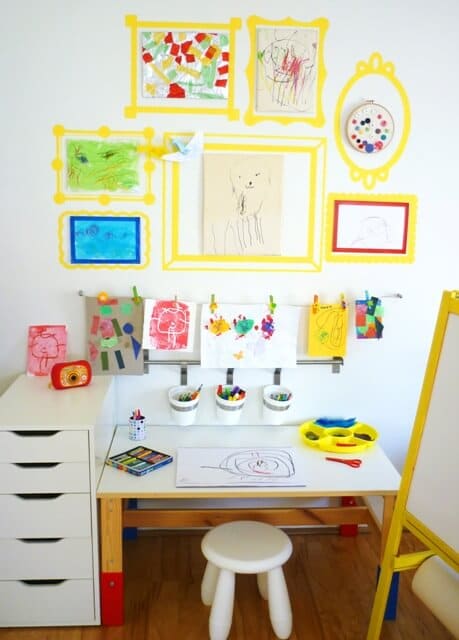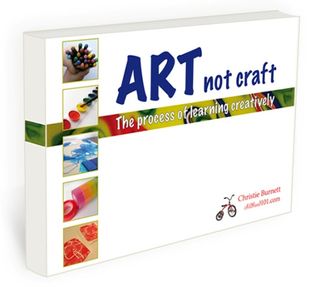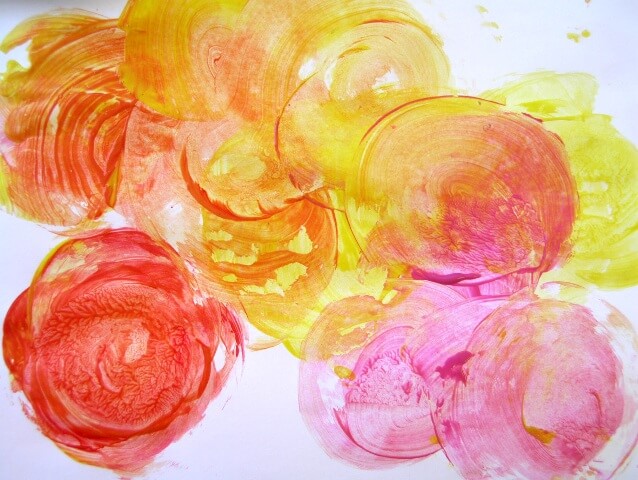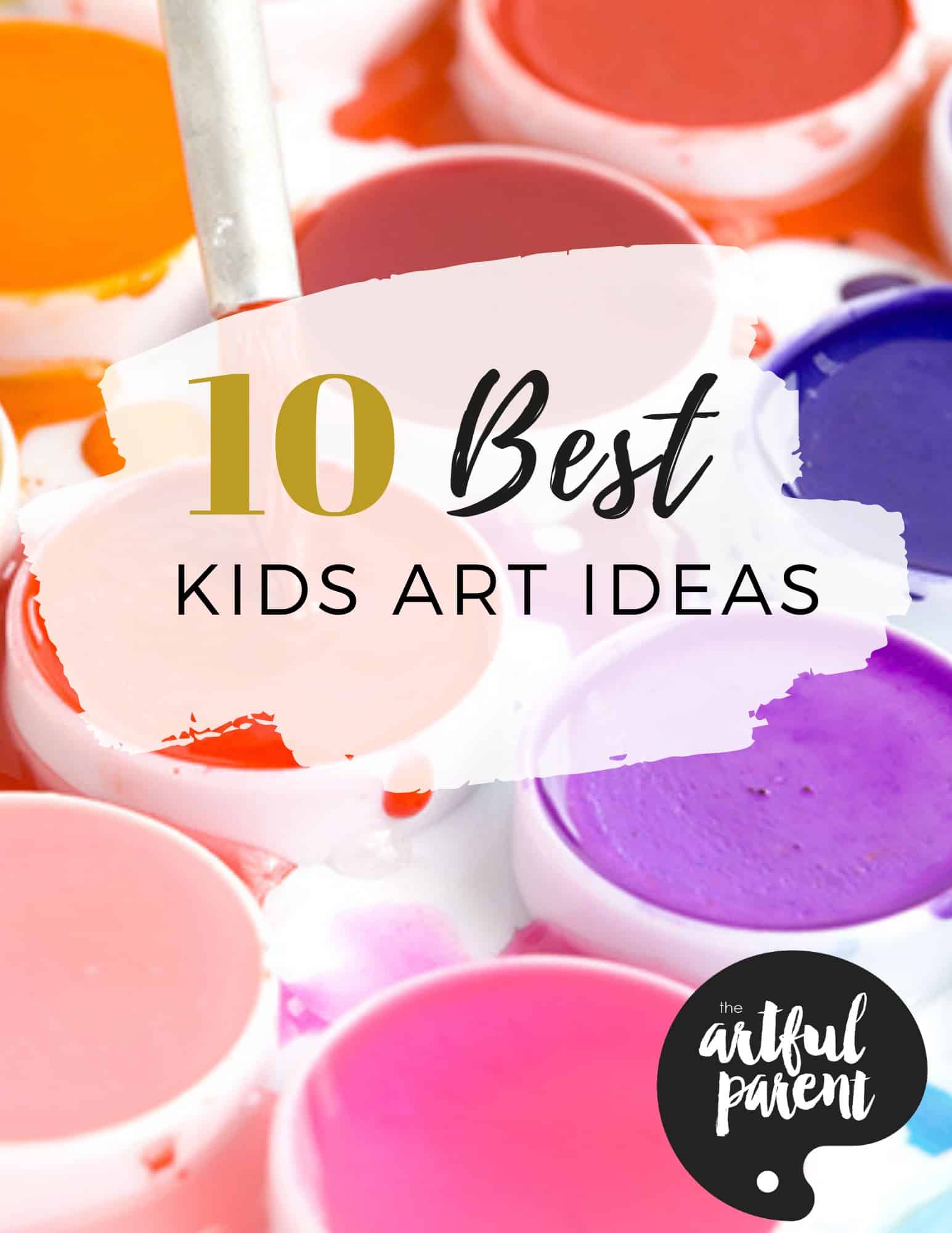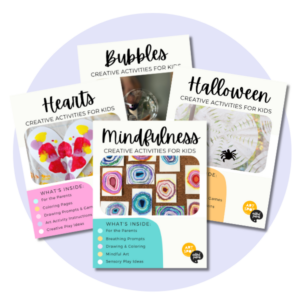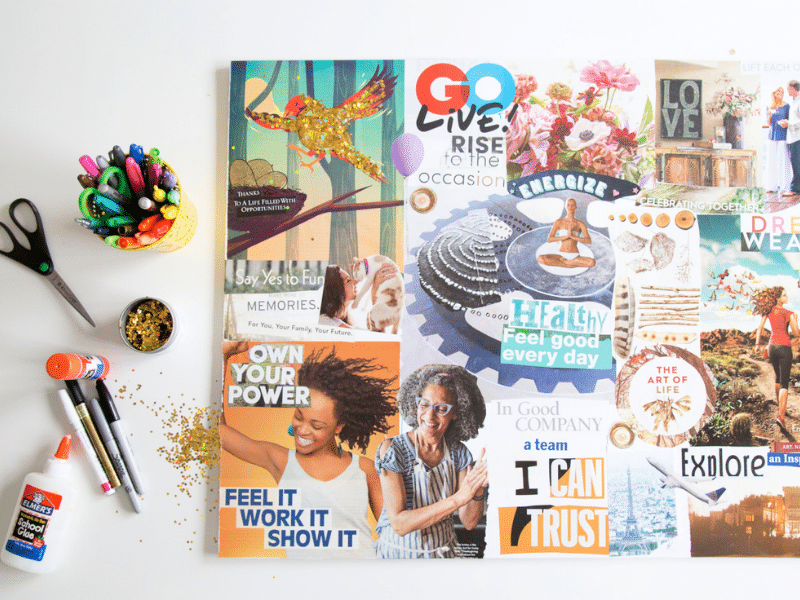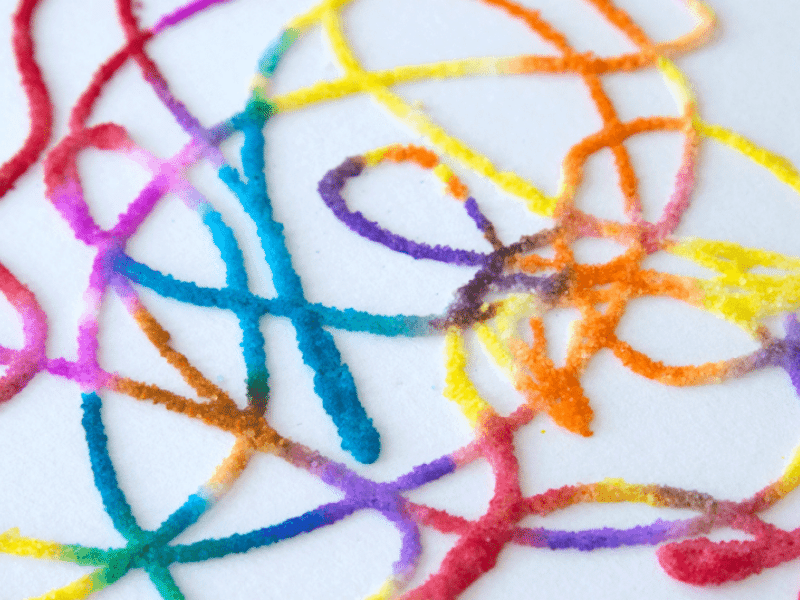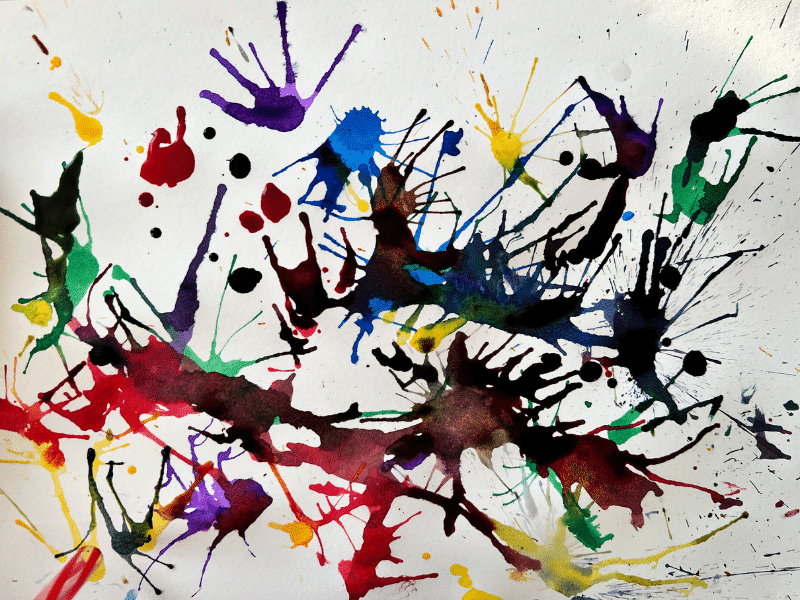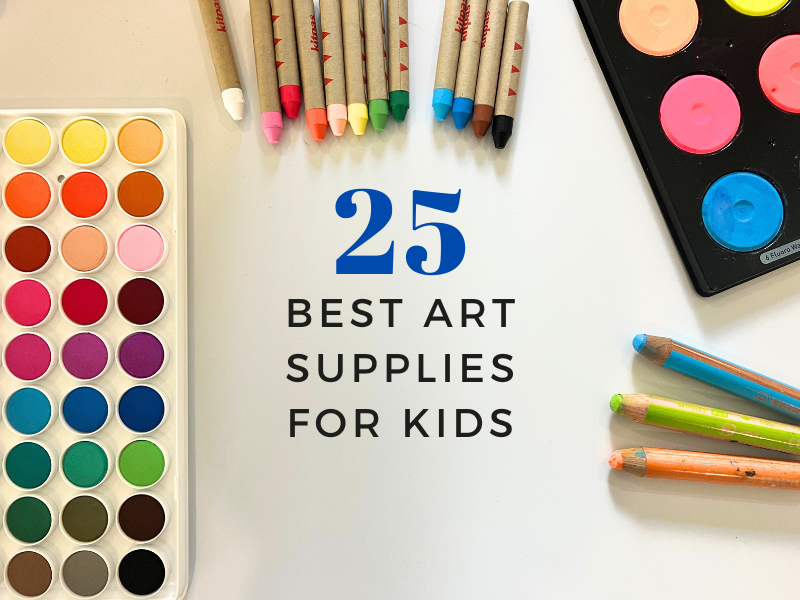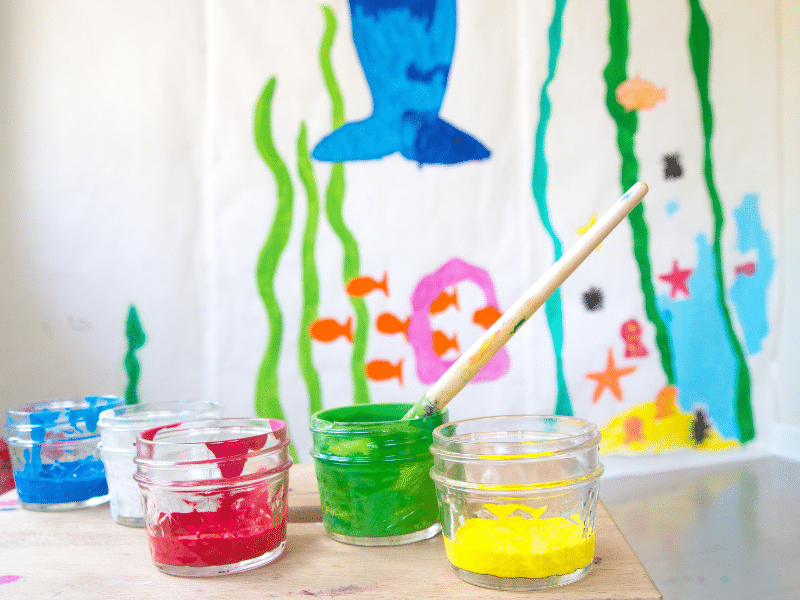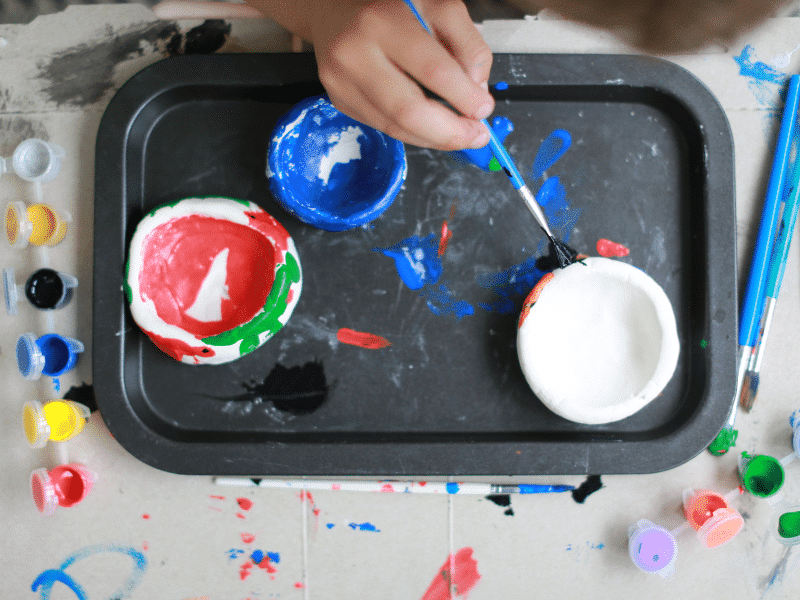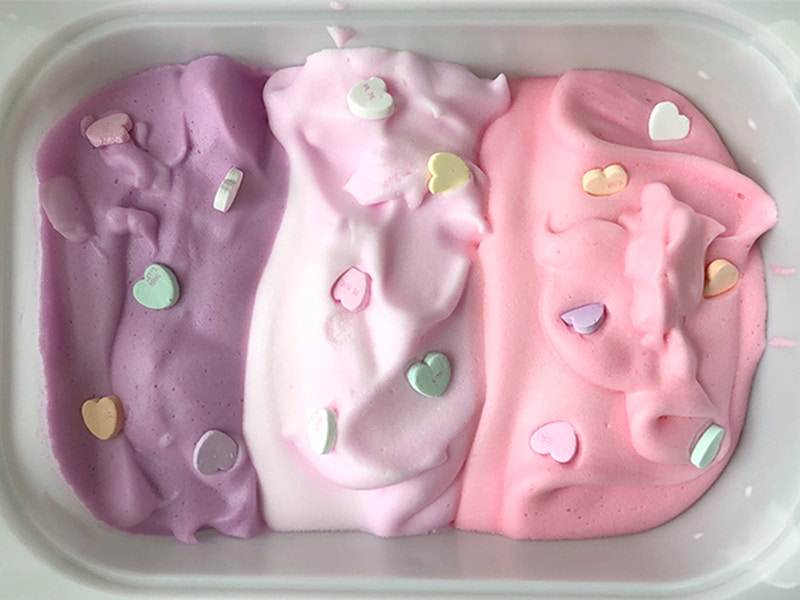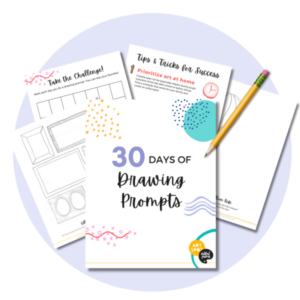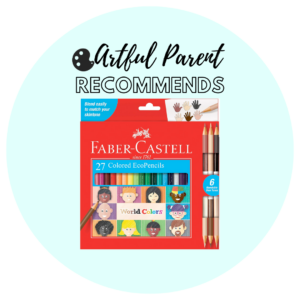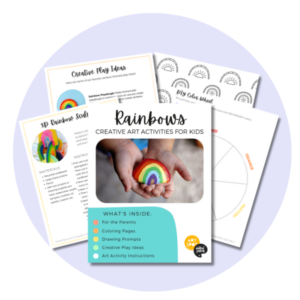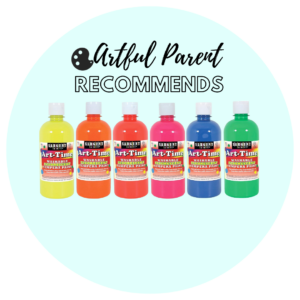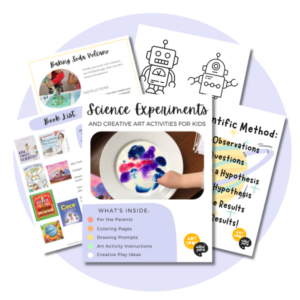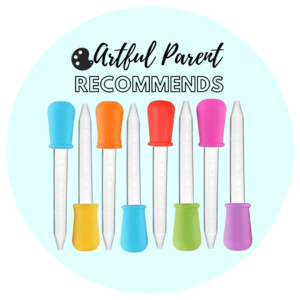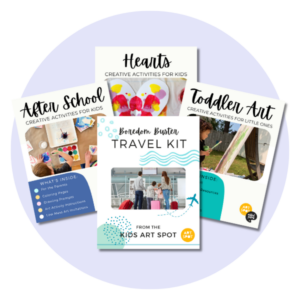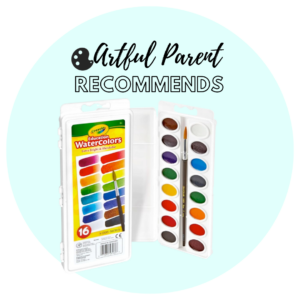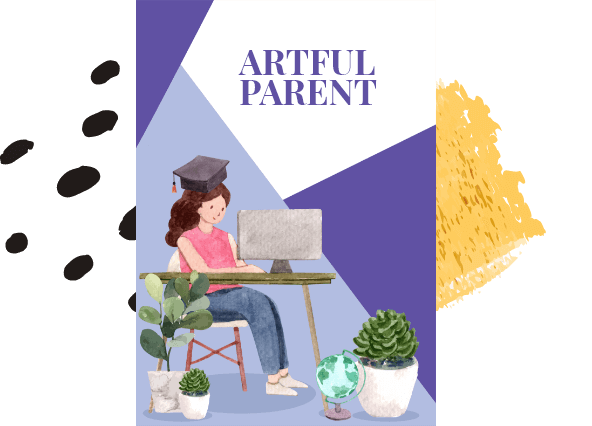Christie Burnett, Aussie mother of one, is a long-time early childhood educator and the founder of the popular blog, Childhood 101. Here she shares her thoughts on art, play spaces, and parenting.
***Note: Readers will have a chance to win a free copy of Christie’s new e-book, Art Not Craft: The Process of Learning Creatively, at the end of this interview.***
JEAN: First, will you tell us a bit about becoming a parent after years in early childhood education?
CHRISTIE: As an early childhood teacher I thought I knew a lot about young children – how they learnt, developed and formed relationships, etc, and I advised parents on all manner of things – children’s eating, sleeping and behaviour issues, to name a few of the more common ones. However, it wasn’t until I became a parent myself that I understood the strong influence of emotion and the attachment between parent and child that makes these areas of parenting so much more complicated. All my years of studying and teaching had definitely not prepared me for the overwhelming sense of love and protection which I felt for my child.

JEAN: What made you start Childhood 101?
CHRISTIE: As a new mum, I found that I missed having something for me as my work had always been such an important part of my life, and as a teacher I loved sharing my passion for quality play-based early education with families and other educators. My blog became what I did for me, an outlet for my thoughts and ideas and feelings and a new place for me to share my passion. I love that whatever your parenting style or philosophy is, there are others around the world feeling, thinking, and sometimes even enjoying, a similar journey to you.
JEAN: I love your daughter’s art space! Will you tell us a bit about setting it up and how it gets used?
CHRISTIE: We are fortunate to have space in our home for a playroom and it is divided into areas – one corner is Immy’s art space, another her home corner/dramatic play area, a third is a reading space and finally there are two mat areas for various toys and activities. As an early childhood teacher, I believe that presenting aesthetically pleasing play spaces with simple organization helps children to feel secure in the knowledge of what happens in that place. This is especially important to creativity, as a child who feels safe and secure feels more freedom to take creative risks.
Within her art space, Immy has free access to different types of paper, drawing utensils, scissors, glue, collage materials and sculpting mediums, and has since she was a little over two years of age. I keep the paints and some glues in a different space, mainly because of storage restraints but Immy is always free to ask for them.
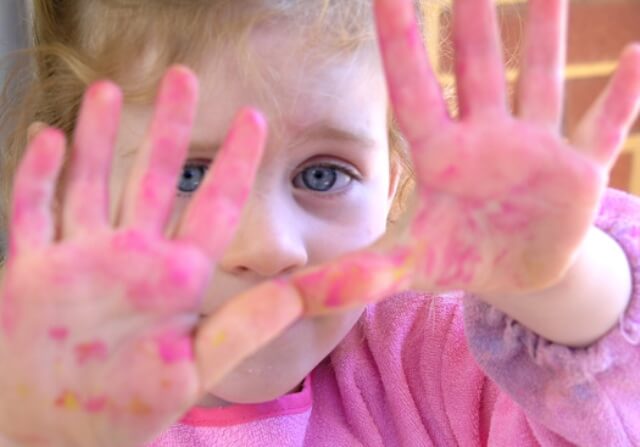
JEAN: What are your favorite creative activities to do with your daughter?
CHRISTIE: Immy would probably choose anything to do with paint and her hands 🙂 Sculpting with clay, plasticine and dough is very popular at the moment and I enjoy watching the learning taking place through the additional challenge that working with 3 dimensional art materials provides – there is a whole heap of problem solving and perseverance hiding in a ball of clay or a stack of recyclables and a roll of tape.
JEAN: I’m excited to hear about your new e-book, Art not Craft – The Process of Learning Creatively! What are you hoping parents will take away from it?
CHRISTIE: I often feel that adults place less value on children’s art activities then they do on other types of learning activities. This is especially true of young children whose art making attempts are about enjoying the experience of creating rather than producing a recognizable image or object. I hope that Art Not Craft helps parents to better appreciate the value of art making to a child’s thinking, their learning across all developmental areas, and as an important vehicle for a child to express both their knowledge and feelings of the world. For example, I recently posted on the blog about the important role that art making played in helping Immy to work through the overwhelming emotions which she experienced during our first trip to the cinema. Drawing and painting materials have helped her to make sense of what she saw, heard and felt and now instead of feeling frightened, she is asking to go again!
Through Art Not Craft, I also want to reassure parents that helping children to express themselves through art materials is not difficult and the ebook provides suggestions for the practicalities of art making – simple ways of minimizing mess, of engaging and involving all children – even those who do not show interest in art making, advice for choosing art projects to suit your child and tips for creating an art area at home, and choosing and organizing art materials.
JEAN: Thank you, Christie! I love what you say about offering attractive and defined play spaces to help children feel confident about what happens in that space. I hadn’t considered it in quite that way, but really like that explanation.
***GIVEAWAY***
Readers who leave a comment to this interview by 12 midnight EST on Thursday, April 21st, will be entered into a random drawing for a free copy of Christie’s new e-book, Art Not Craft: The Process of Learning Creatively.
The random number generator picked #52 so Melissa wins the copy of Christie's e-book. Congrats!
I love that little work space! We recently bought a new table for our kitchen so that our old table could be exclusively used as an art table. It's made a huge difference for us to have a dedicated space. The e-book sounds great, thanks for the chance! I'm off to check out your blog, Christie!
Related Posts
-
The Art of Strewing for Kids
Strewing is the art of casually yet strategically leaving art and learning invitations out for…
- The Beginning of The Artful Parent
Hello no one and everyone. My name is Jean Van't Hul and I am mom…
- The Beginning of The Artful Parent
Hello no one and everyone. My name is Jean Van't Hul and I am mom…


